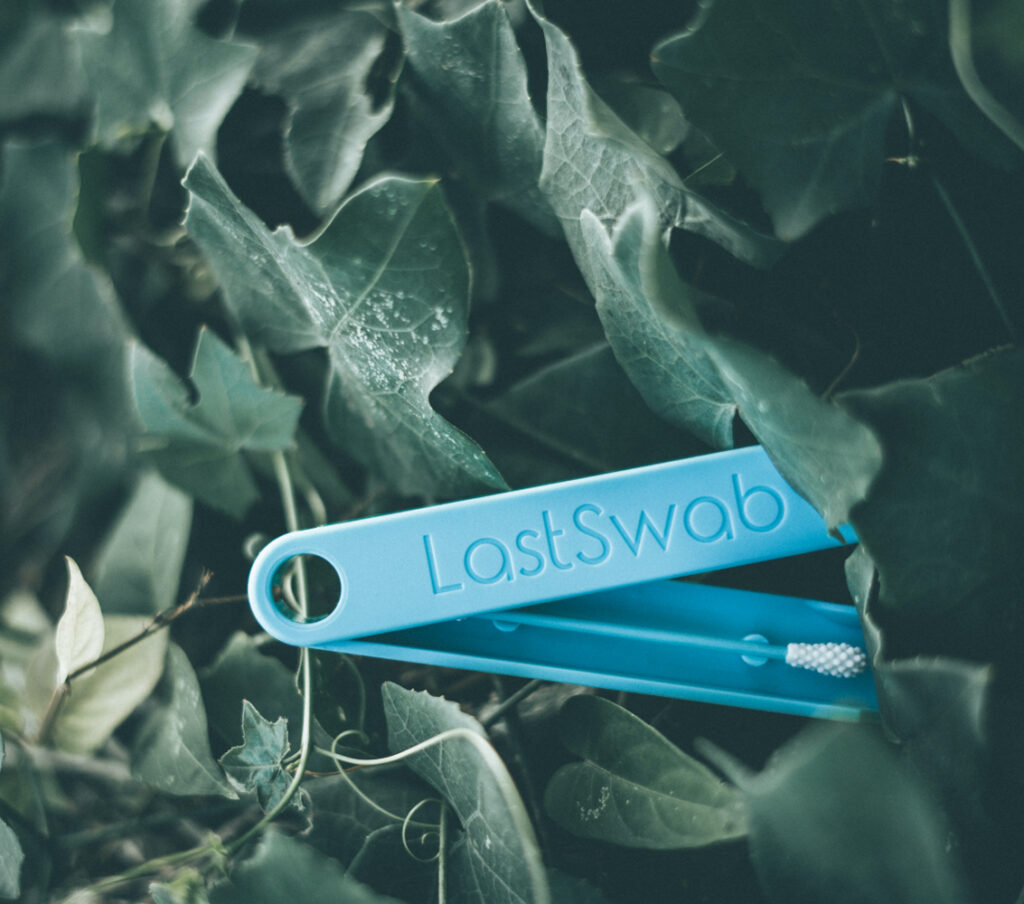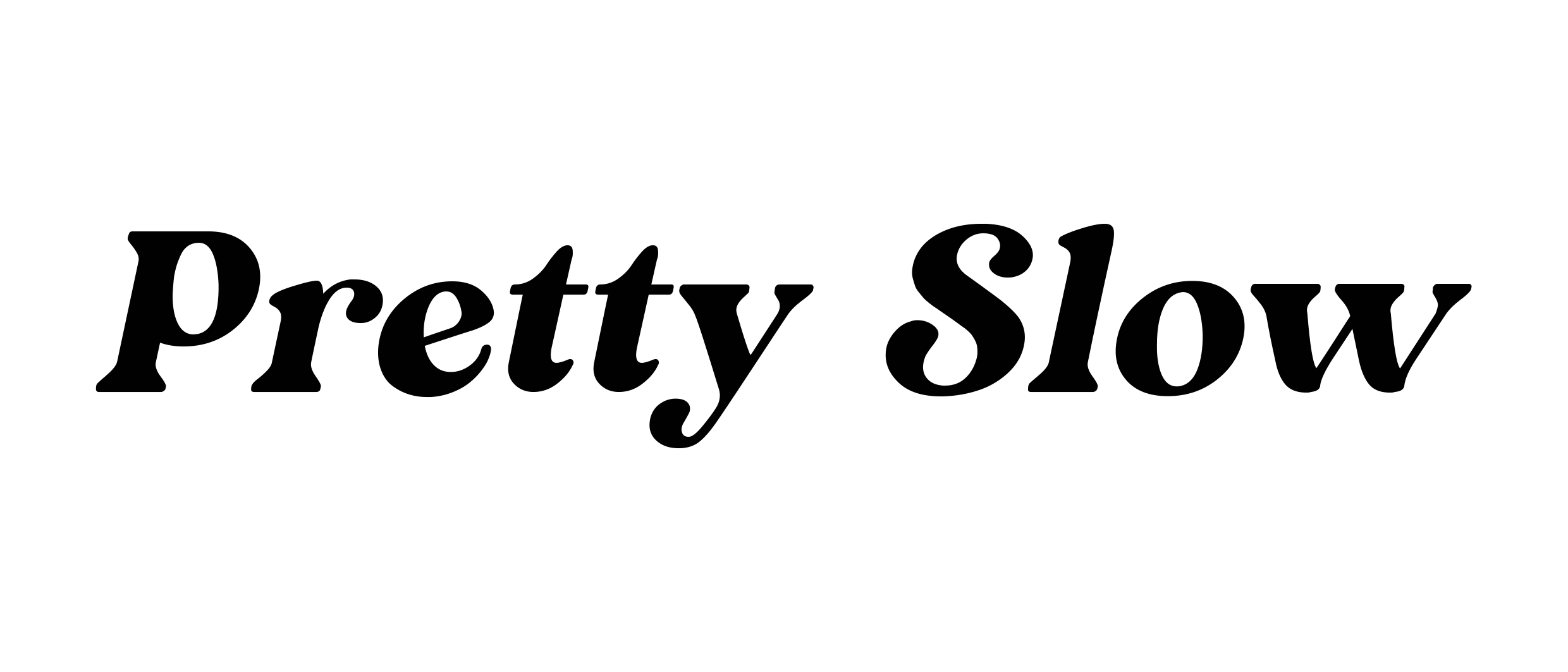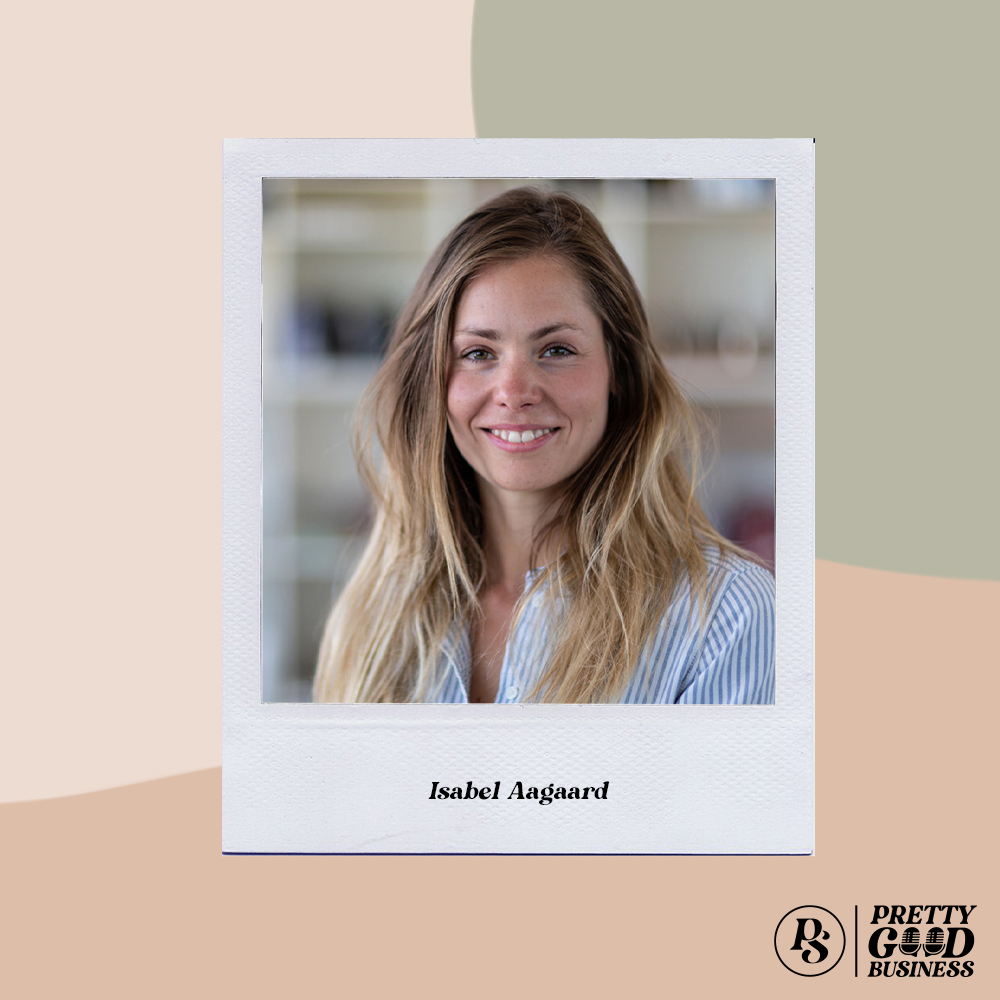We sat down with Isabel Aagaard, green entrepreneur and co-founder of LastObject, to talk about sustainable business and how tackling single-use plastic is critical to save our world.
Isabel Aagaard is the co-founder of LastObject, the Danish company that created the very first reusable cotton swab, LastSwab. Their goal is simple: to eliminate single-use items from the planet, one object at the time, starting from the not-so-sexy bathroom essentials.
Isabel joined us on the very first episode of Pretty Slow’s business podcast, Pretty Good Business, to talk about co-design and how the idea of LastSwab came about but also to give us a few tips on how to create and run a sustainable business.
If you are thinking bout starting your own sustainable business are looking to get inspired, Isabel is the person you should listen to.
Can you tell us more about LastObject? And why did you decide to tackle bathroom essentials? Sustainable business
I have created LastObject with two co-founders, Nicolas Aagaard and Kåre Frandsen, to tackle single-use items. A couple of years ago we realised the extent of how bad the single-use industry was for the planet – since then we have been trying to find alternatives for at least some of the disposable items that we use daily.
To start, we looked at the most polluting single-use items, and we found that cotton swabs were very high on the list. At the time, there wasn’t a valuable alternative for that, and we decided to start from that. I think the fact that the idea of a cotton swab – and especially a reusable one – is a bit gross, really helped us put the word out about LastSwab and create a successful first product.
You are the co-designer; what does that mean? What is collaborative design?
It’s a very new concept even here in Denmark. It’s a mix between a designer and an anthropologist. So it’s not learning to create a design but more learning how to make others come up with a design. For example: before LastObject, I worked in hospitals, and I used most of my time to interact with doctors and nurses to create tools and design solutions themselves to find a solution to their problems. I helped them come up with the idea, and then I made the design and the actual product.
Talking about your experience in hospitals: you created a reusable chemo bag that is now used in every oncology in Denmark. Can you talk more about that project?
That was an enjoyable project to work on. Some nurses developed a way for patients to bring their chemotherapy at home. This bag was specially designed for patients with Leukemia because their therapy lasts ten days (because the chemotherapy is released slowly in the body). This way, patients didn’t have to be admitted in the hospital and could have the therapy in the comfort of their home. There are a lot of studies that show how people were feeling better being able to stay home and see their families more. Also, they don’t have to be in a high-risk environment like the hospital is (especially now).
The nurses that came up with the idea needed a bag to carry the therapy, and that’s what other designers and I helped create. Sustainable business
What does your creative process look like?
We prototype a lot, and we do it in different ways. My two co-founders are good at working with 3D programs, so we draw the product and print it on 3D printers with different materials. We also have a laser cutter to prototype the packaging and make sure that everything works.
How many prototypes did you have to do for LastSwab?
For LastSwab, hundreds! We had to try lots of different materials and finishes because we have to make sure it’s safe. Especially for LastSwab, it was so essential for the ends to stick entirely to the broad; otherwise, the heads would end up in your ears, and that’s such a delicate product – it can’t be dangerous in any way.
Are you working on a cotton bud for kids?
I don’t know if I should say this, but we are! We have already created something that I am already using and testing on my son, and it’s working well. Sustainable business
How do you wash it and in general make sure that it’s hygienic?
Absolutely! We used specific materials that make the swab a wholly closed surface. For example, we couldn’t use something like bamboo because bacterias can infiltrate the wood and fragments. Thanks to the material we use, you can simply wash it with warm water and soap, and it stays clean. We also made the box so that the ends of LastSwab don’t touch any surface.
You also have one for makeup, how was the response for both products at first?
We first launched the basic one, but very soon people started talking to us about makeup and some of my friends told me that they use up to ten cotton buds a day to clean up their makeup, so we had to tackle the problem. The LastSwab designed to remove makeup is probably the one that has a more significant impact on the fight against single-use cotton buds.
You usually launch your product on crowdfunding platforms first, you raised $1.3 million for LastSwab, why did you decide to take the crowdfunding path?
I think that crowdfunding is a great way to test out your products before starting production. Sometimes, as a designer, you think you have this fantastic product, but not every product will be a success with the public. Crowdfunding is an excellent way to find out if people are interested in your product if the pricing is right and so on. I don’t want to put something into production that nobody wants, ending up creating even more waste. It’s a very sustainable way to test your designs and start to engage with potential clients and build a community.
Would you recommend it to anyone that wants to launch a new sustainable product?
I can’t even imagine anything crowdfunding wouldn’t work for. I think it’s such a good and very cheap way to see if your idea is something that you should quit your day job to do.
What did you learn during the process of building a sustainable brand?
That there is a massive market for sustainability. I had no idea that people were so ready for this. I know that in Scandinavia we’re very interested in being more sustainable, but I’ve just realised that it’s a worldwide trend now.
Do you find that it is easier in Scandinavia to ‘convince’ people to switch to a sustainable option? How do you approach cultural differences between countries?
We have to find out how to talk about our products in different countries and cultures. In Denmark, sustainability would be the main focus of our pitch but maybe in Italy should be the colours and in Japan, for example, they love the feel of the materials and the fact that the packaging is cute. You can sell the same product playing on different aspects.
What has been most challenging, making the product or convincing people that a more sustainable solution is possible?
I like the ‘convincing’ part and telling people the story of the product; I find that very fun. But for my co-founders, I think that designing is the best part of the process. It also changes from product to product. For LastSwab, we were just playing with different materials and then, all of a sudden, we had a product. On the other hand, creating LastRound was a long process because it was harder to find the right materials.
LastRoud is your latest product, can you tell us more about it, and how is your product different from the reusable cotton disks that are already around?
We wanted LastRound to feel like a traditional cotton round as much as possible, and it was quite hard to find the perfect materials for it. We ended up using a Swedish invention, a material that is 70% wood fibres and 30% cotton and it’s made a bit like paper. When you receive them they are relatively rigid, but you just have to apply water, and they feel a lot more like traditional cotton rounds than other reusable ones that are made of bamboo or hemp.
How do you see the future for your company but also for the world in general? Do you think people are embracing sustainability more because of the pandemic?
I think the pandemic has done both a disservice and a service to the sustainability movement. This year we have produced a lot of additional waste because of face-masks, but we did see a more significant focus on sustainability and the environment. But in general, the interest in sustainable alternatives has grown exponentially in the last few years, and the green community is very driven.
Regarding LastObjects, we are going to focus on bathroom essentials for a while because there are still a lot of problems we want to solve.
What is the project/design that you are most proud of?
I think LastSwab because we took a risk with it doing something that nobody else was doing. The whole process was enjoyable and challenging.

What do you do to get inspired and to find new ideas?
My daily life inspires me to find solutions to the problems I see. For the three of us, when we need something that is not there (or what’s there is not good enough) is a great motivation to create it ourselves.
Do you think that becoming a mum changed how you see things and what you want to work on next?
Yes, babies create a lot of trash, and I realised it when I became a mum. That’s why we are working on a baby version of LastSwab.
When we started, my brother and co-founder Nicolas told us that was pushing him to do this more than anything else were his kids. Now I understand what he meant. You want to give your kids a better life and a better world when you are not here anymore. You don’t want them to have to clean up after you because you messed up. You want to start the transition to a cleaner world so that they can have a really good life here on this planet.
What keeps you going and makes you happy to go to work every day?
The three of us, we have such a good relationship, and we have so much love for each other, and it’s so fun to work with them. We play a lot when we are in the designing process. Having a good team is everything.
If you could give people one piece of advice on how to be more sustainable in their everyday life, what would it be?
I would say, take one thing at a time. I think going into it slowly is necessary because it can be very overwhelming if you go towards a zero-waste lifestyle. I suggest to take one of your not-so-sustainable habits and change it for a month, just one.
For example, I love getting a coffee to go. When I go out, I try always to remember my reusable cup, and I always have one in my car – after a while, it becomes a habit. The small things can change your mindset, so tackle one thing at the time. If everybody does one little thing, that can change things.
And one advice for business owners or wannabe business owners that want to create a sustainable business? Anything that you wish you knew when you started?
Jump, it’s not too far! There are so many possibilities in sustainability and, right now, there is also a significant interest around it. A lot of people are ready to change their habits and change the way they shop.
There is so much greenwashing right now that is so important for small green business owners to create real, sustainable alternatives.
If I can give one piece of advice, is to realise that you can’t be good at everything but that you have to understand everything. It’s so important to understand every little corner of your business, and you can’t shy away from things that you don’t enjoy (that would be numbers for me). If I listened to this advice when we started, I would have saved myself a lot of time and headaches.
This interview has been edited for clarity.


